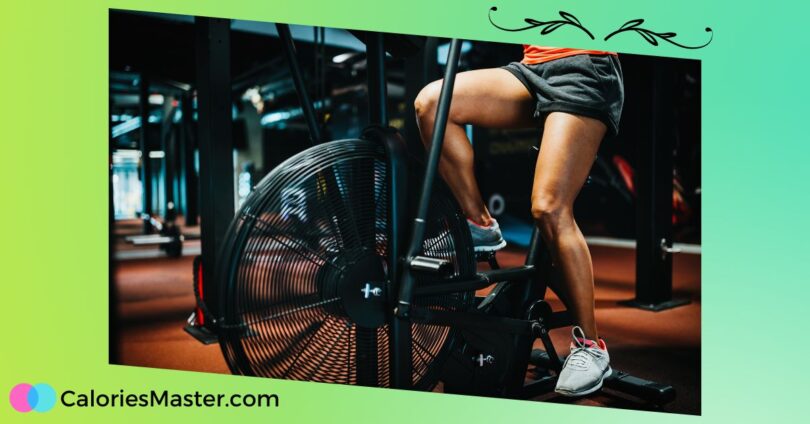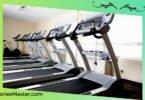If you’re looking to add a new piece of equipment to your home gym, you might be considering a rowing machine or an air bike. Both machines offer a great cardio workout and can help you burn calories, improve your endurance, and build muscle. But which one is right for you?
A rowing machine is designed to simulate the action of rowing a boat, making it a great full-body workout that engages your legs, core, and upper body. It’s a low-impact exercise that is easy on your joints, making it a good option for people who have knee or hip problems.
On the other hand, an air bike, also known as an assault bike, is a stationary bike that uses a fan to create resistance. It’s a high-intensity workout that can help you burn calories quickly, but it can be tough on your joints if you’re not used to the motion.
When deciding between a rowing machine and an air bike, it’s important to consider your fitness goals and personal preferences.
If you’re looking for a low-impact, full-body workout that can help you build endurance and strength, a rowing machine might be the right choice for you.
However, if you’re looking for a high-intensity workout that can help you burn calories quickly, an air bike might be a better fit. Ultimately, the best choice depends on your individual needs and preferences.
Overview of Rowing Machines
Rowing machines are a popular piece of gym equipment that simulate the motion of rowing a boat. They are a great way to get a full-body workout, as they engage multiple muscle groups at once.
In this section, we will explore the different types of resistance used in rowing machines, the muscle groups they target, and typical use cases.
Resistance Types
There are four main types of resistance used in rowing machines: air, magnetic, hydraulic, and water. Air resistance rowing machines are the most common type and provide a smooth, consistent resistance throughout the stroke.
Magnetic resistance rowing machines use a magnetic brake to create resistance, which can be adjusted electronically. Hydraulic resistance rowing machines use pistons to create resistance, and the resistance level can be adjusted manually.
Water resistance rowing machines use a water-filled flywheel to create resistance, which provides a realistic rowing experience.
Muscle Groups Targeted
Rowing machines are a great way to work out your entire body. The main muscle groups targeted by rowing machines are the back, shoulders, arms, core, and legs.
The pulling motion of rowing engages the back, shoulders, and arms, while the pushing motion engages the legs and core. By using a rowing machine, you can get a full-body workout in a single exercise.
Typical Use Cases
Rowing machines are a great way to improve your cardiovascular fitness, build muscle, and burn calories. They are often used by athletes to improve their performance in other sports, such as rowing, running, and cycling.
They are also a popular choice for people looking to lose weight or improve their overall fitness level. Rowing machines are low-impact, making them a great option for people with joint pain or injuries. They are also easy to use, making them a great choice for beginners.
Overview of Air Bikes
If you’re looking for a high-intensity, full-body workout, the air bike might be the perfect option for you. Air bikes, also known as fan bikes or assault bikes, are stationary bikes that use a fan to create resistance.
They’re often used in CrossFit gyms and other high-intensity training facilities, but they can be a great addition to any home gym.
Resistance Mechanism
The resistance mechanism on an air bike is different from that of a traditional stationary bike. Instead of using a flywheel and magnetic resistance, air bikes use a fan to create wind resistance.
The harder you pedal, the faster the fan spins, and the more resistance you feel. This means that the resistance on an air bike is unlimited – the harder you work, the harder the workout becomes.
Muscle Engagement
One of the biggest benefits of using an air bike is the full-body workout it provides. While traditional stationary bikes primarily work the lower body, air bikes engage both the upper and lower body.
As you pedal, you’ll also be pushing and pulling the handlebars, engaging your arms, shoulders, and back. This makes air bikes a great option for those looking to improve their cardiovascular fitness while also building strength and endurance.
Common Usage Scenarios
Air bikes are often used in high-intensity interval training (HIIT) workouts, where you alternate between periods of high-intensity work and rest. They’re also a popular choice for CrossFit workouts, where they’re used to improve aerobic capacity and overall fitness.
However, air bikes can be used by anyone looking for a challenging, full-body workout. Whether you’re a beginner or an experienced athlete, an air bike can help you improve your fitness and reach your goals.
Comparative Analysis
let’s do a comparative analysis on both.
Calorie Burn
When it comes to burning calories, both the rowing machine and air bike are great options. According to a study published in the American Journal of Sports Medicine, a person weighing 155 pounds can burn approximately 260 calories in just 30 minutes of moderate rowing.
Similarly, a person weighing the same can burn around 300 calories in 30 minutes of moderate air bike exercise. However, it’s important to note that the actual number of calories burned may vary depending on factors such as age, weight, and intensity of the workout.
Impact on Joints
If you have joint problems, the rowing machine may be a better option for you than the air bike. Rowing is a low-impact exercise that puts less stress on your joints than high-impact exercises like running.
According to a study published in the Journal of Sports Science and Medicine, rowing can help improve joint mobility and reduce the risk of joint injuries. On the other hand, air biking can put more stress on your knees and hips, which can be problematic if you have joint problems.
Space and Portability
When it comes to space and portability, the air bike has a clear advantage over the rowing machine. Air bikes are generally smaller and more compact than rowing machines, which makes them easier to store in small spaces.
Additionally, air bikes are usually lighter and easier to move around than rowing machines. However, it’s worth noting that some rowing machines can be folded up for easier storage, so they may still be a good option if you have limited space.
In summary, both the rowing machine and the air bike have their pros and cons. If you’re looking for a low-impact exercise that can help improve joint mobility, the rowing machine may be the better option for you.
On the other hand, if you’re short on space and want a more compact and portable exercise machine, the air bike may be the way to go. Ultimately, the choice between the two will depend on your personal preferences and fitness goals.
Pros and Cons
lets explore pros and cons of both:
Rowing Machine Advantages
Rowing machines provide a full-body workout that engages multiple muscle groups, making it an excellent choice for those looking to burn calories and tone their muscles.
The motion of rowing mimics the movement of rowing a boat, making it a low-impact exercise that is easy on the joints. Rowing machines are also relatively quiet and compact, making them a great addition to a home gym.
Air Bike Advantages
Air bikes provide an intense cardiovascular workout that can burn a lot of calories in a short amount of time. The resistance on air bikes is created by a fan, which means that the harder you pedal, the more resistance you will feel.
This makes air bikes a great choice for high-intensity interval training (HIIT) workouts. Air bikes are also low-impact, making them a good choice for those with joint pain or injuries.
Considerations for Rowing Machines
One potential downside of rowing machines is that they can be difficult to use correctly. Proper form is essential to avoid injury and get the most out of your workout. Rowing machines can also be quite expensive, with some models costing thousands of pounds.
Additionally, rowing machines can be quite noisy, which may be a concern for those living in apartments or shared living spaces.
Considerations for Air Bikes
One potential downside of air bikes is that they can be quite uncomfortable to use for extended periods of time. The seat on air bikes can be hard and narrow, which can cause discomfort and even pain.
Air bikes can also be quite loud, which may be a concern for those living in shared living spaces. Finally, air bikes can be quite expensive, with some models costing thousands of pounds.
Overall, both rowing machines and air bikes have their advantages and disadvantages. The choice between the two will depend on your fitness goals, preferences, and budget.
Conclusion
In conclusion, both the rowing machine and the air bike are excellent cardio machines that can help you achieve your fitness goals. The rowing machine is ideal for those who want to work on their upper body strength and endurance, while the air bike is perfect for those who want to focus on their lower body.
When it comes to calories burned, both machines are effective at burning calories and helping you lose weight. However, the exact number of calories burned will depend on various factors such as your weight, the intensity of your workout, and the duration of your workout.
If you’re looking for a low-impact workout that is easy on your joints, then the rowing machine is a great choice. It is also a versatile machine that can be used for both cardio and strength training.
On the other hand, if you want a high-intensity workout that will challenge your lower body, then the air bike is an excellent choice. It is also a great machine for interval training and can help you improve your endurance and stamina.
Ultimately, the choice between the rowing machine and the air bike will depend on your fitness goals and personal preferences. Both machines offer a great workout and can help you achieve your fitness goals.









